This Site Was Built With You In Mind!
Dashboard Warning Lights
by Eddie Carrara
|
Dashboard warning lights, do you know what it means when they illuminate? Car manufacturers use warning-light icons to describe what system is in use or what system has a malfunction. Just because a dashboard warning light illuminates doesn't mean there is a problem in that system; sometimes, it's part of a routine check. |
All of the warning light should illuminate when the ignition is in the run position; this is called a bulb check. If there is a problem with any light bulbs, another system will alert you that there is a bulb problem in the instrument panel.
Warning Light Information
The best resource for this information would be in the owner's manual. Still, because you're here, you probably don't have one, and that's why I created this totally awesome dashboard warning lightmap, so you could quickly identify what all these crazy lights mean.
I don't understand how the manufacturers develop these icons because some of the icons are blatantly horrible resemblances of the actual system. Still, I'm not on the board of directors, so I don't have much say in the matter. I'm just here to help you decipher which lights do what and why.
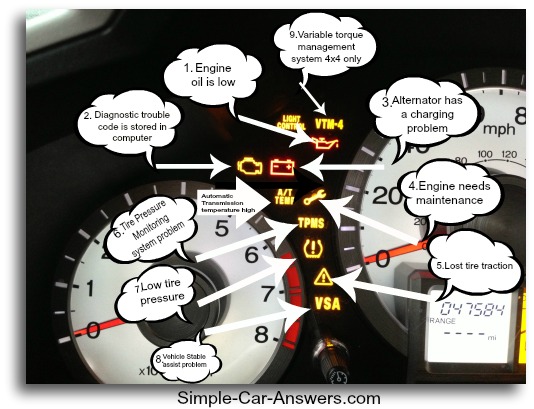
So let's take a look at the image above. I graciously numbered all the icons so I could explain each of the dashboard warning lights.
- The oil light is pretty straightforward. If the light is on, your probably low on oil, and if you don't put some in soon, your engine will be junk. If it's flashing, it's warning you the oil is getting low, so stop and put some in or have your oil changed.
- The check engine light looks like an engine, but only if you know what an engine looks like outside your vehicle's engine compartment. If it's on, it means you have a DTC or diagnostic trouble code. So pull out your code reader and find out what Auto Computer Code is stored, then fix it or have it fixed.
- The light that looks like a battery has nothing to do with the battery, well, maybe a little. If the battery warning light comes on, there are a few possible causes, the alternator, the voltage regulator, or another component used to regulate voltage in the electrical system. Have it checked quickly; your battery could be overcharging or undercharging, and could both leave you stranded.
- The wrench, your car is due for maintenance, you know what to do, right?
- Traction control light will flash if the tires lose traction from the road, like when driving on snow or sand, and then it will go out. If there is a problem in the system, it will stay lit until it's fixed.
- TPMS or tire pressure monitoring system warns you of low air pressure in your tires. If this warning light is on, there is a problem with the TPMS system, not low air pressure in a tire. The light will illuminate if there is damage to a sensor due to tire replacement, sensor battery failure, or TPMS control unit failure.
- The low tire pressure warning light is just that. It's warning you that one or more of your tires has low air pressure. I recommend adding air as soon as possible. Driving on tires with low air pressure for an extended period can cause a tire to blowout.
- The vehicle's stable assist light is to warn you that the system is off or there's a problem with the system.
- The variable torque management system used on full-time all-wheel-drive vehicles like the Honda Pilot, CRV, and Ridgeline is a system that warns you the tires are spinning at different speeds as if you were on ice. The vehicle will use the ABS to slow down the wheels on ice and redirect power to the wheels that have traction.
- AT temp or automatic transmission temperature, this warning light will illuminate if the transmission is overheating. This light usually illuminates while towing something heavy without the right kind of transmission cooler.
More Dashboard Warning Lights
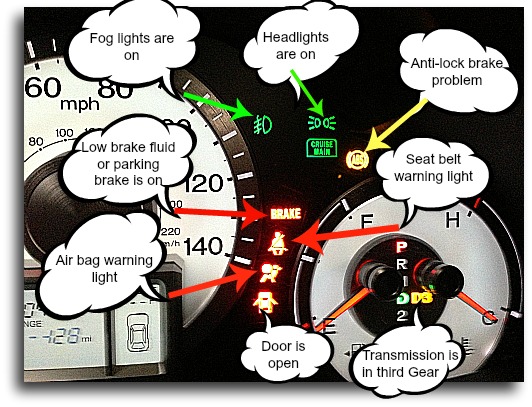
Starting at the top of the picture and moving clockwise, I will explain each one, sorry this picture isn't as cool as the last one, but it is still pretty awesome, don't you think? :)
Headlights are on, you guessed it, your headlights are on, pretty simple.
ABS or anti-lock brake warning light will usually illuminate when your brake system is low on brake fluid or a problem with the ABS.
Seat belt warning light will illuminate if there is a problem in the system or as a warning to fasten your seat belts.
Transmission is in third gear. This light will illuminate when the transmission has been shifted into third gear manually by either moving the shift lever or hitting the button in the shift lever.
The door is open. Again, pretty self-explanatory, one of the vehicle's doors is not closed completely.
SRS or Airbag warning light. This light should never be on unless the system is doing a bulb check or there's a problem in the system. If your light is on, have it checked asap.
Brake warning light. When this light is on, the brake warning light has three possible causes: low brake fluid, the float in the brake reservoir is not working or damaged, or the parking brake is on.
Fog lights are on. I guess your fog lights are on. You can either turn them off or leave them on :)
This is a instrument panel for a
2006 Honda Pilot
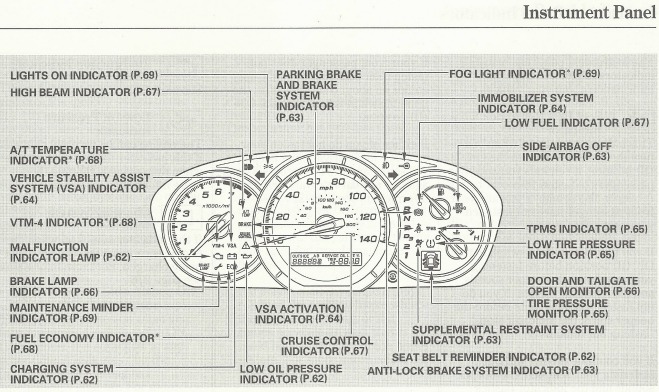
With all these fantastic pictures and definitions, I hope I cleared up some of your confusion. Dashboard warning lights can get scary if you're not sure why they're on, so I'm glad you stopped by to find out more information about them. Let me know if you have any questions or if you're still confused about a warning light. Just leave a comment in the box below, and I will get back to you soon thanks.
This article is accurate and true to the best of the author’s knowledge. Content is for informational or entertainment purposes only and does not substitute for personal counsel or professional advice in business, financial, legal, or technical matters.
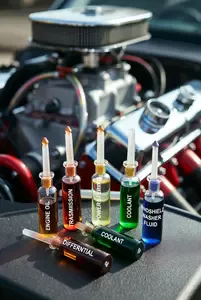
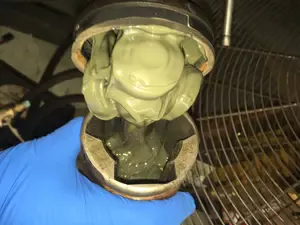
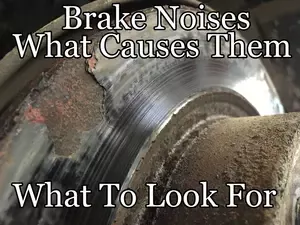
New! Comments
Do you have a question about your car? Leave me a comment in the box below, I bet I can answer your question better than your mechanic.